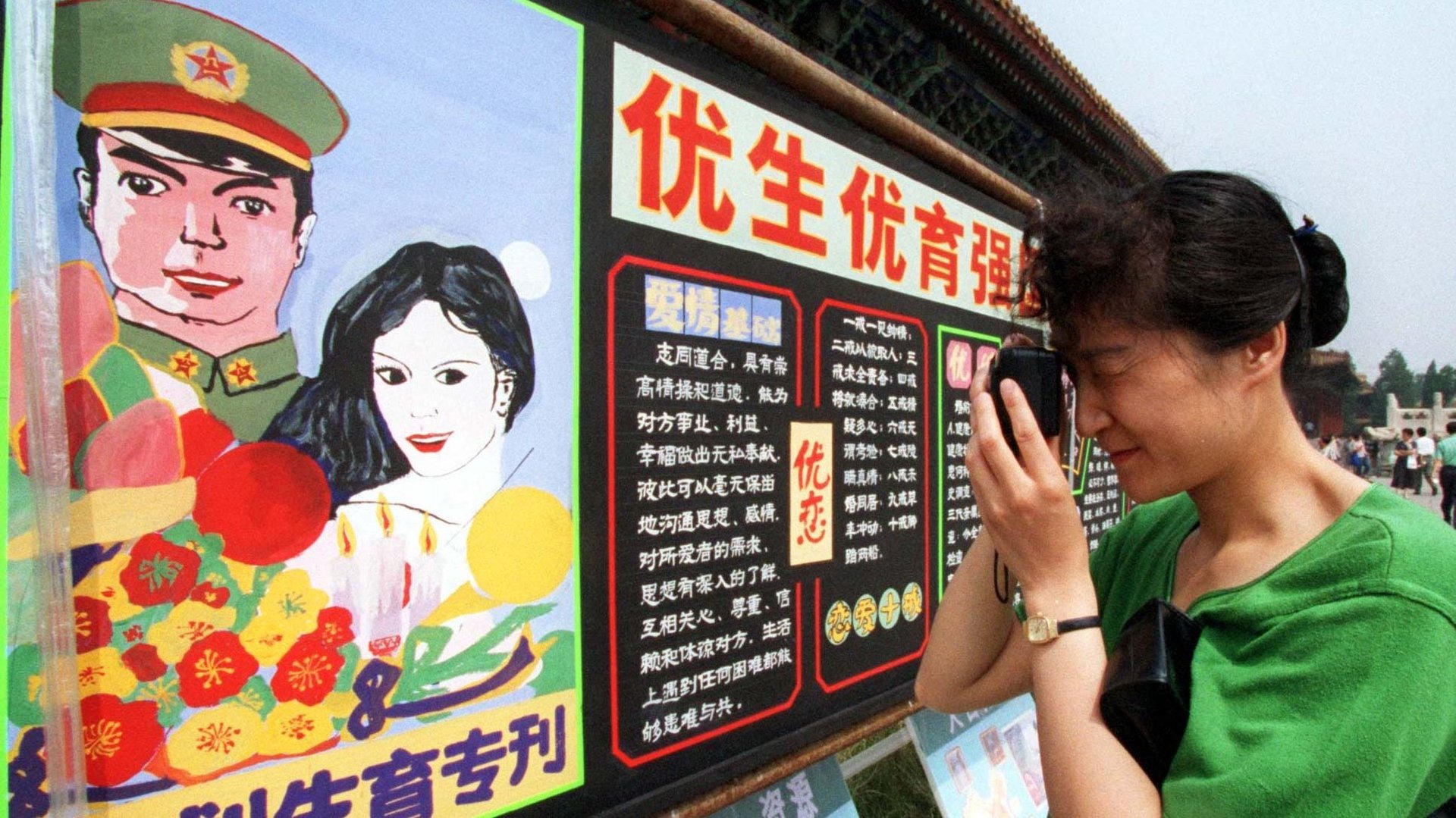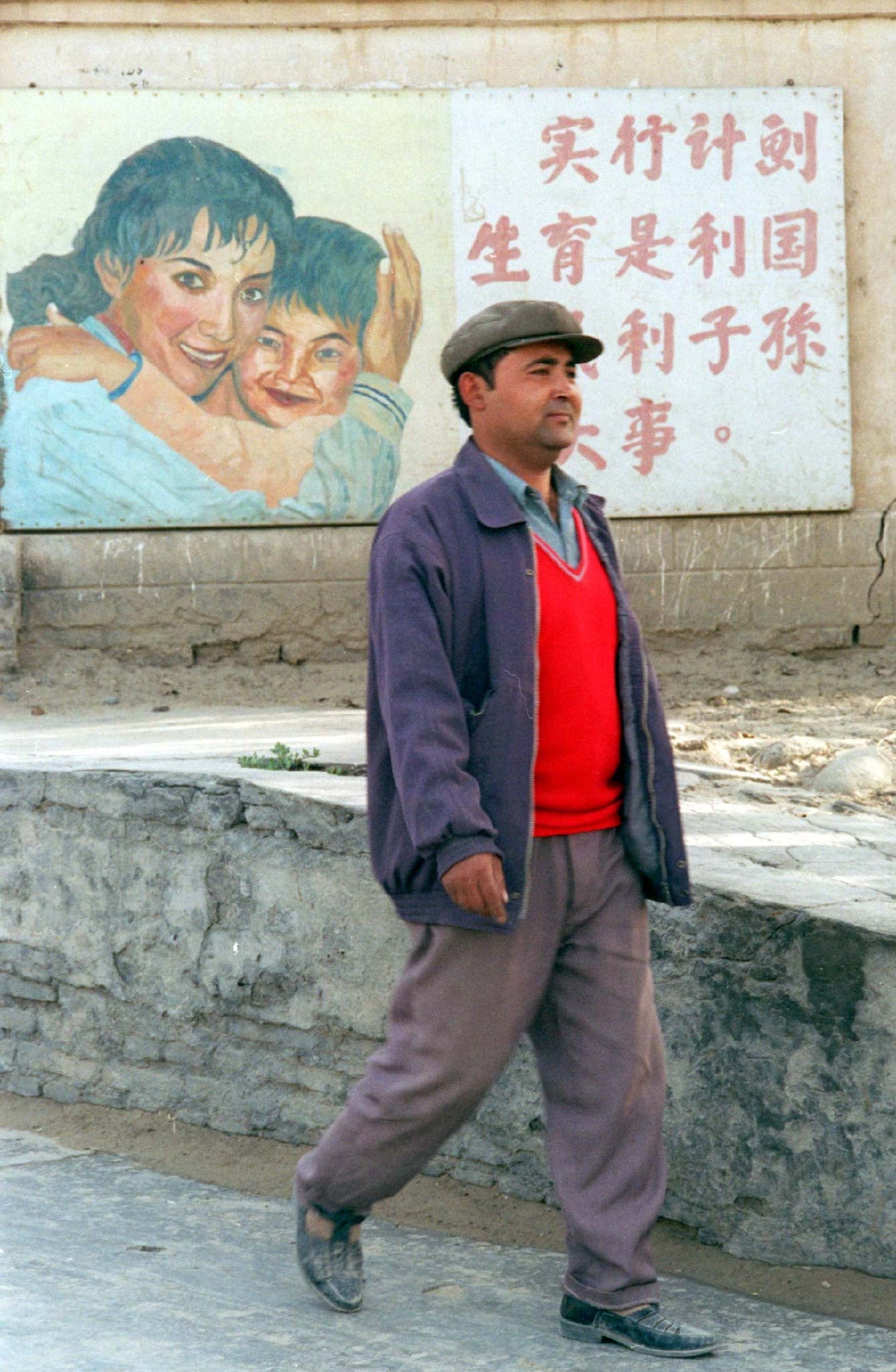China’s propaganda journey from “only one child is good” to the three-child policy
The Chinese government has had a long history of controlling women’s wombs.


The Chinese government has had a long history of controlling women’s wombs.
Ever since 1979, the year when Beijing implemented the one-child policy, the state has dictated the number of children families can have according to China’s economic needs at different times. Beijing’s latest adjustment of its family planning policy came last week, when it announced that couples can have up to three children, six years after it granted a quota of two kids for families in 2015.
The new policy was quickly met an outpouring of mockery and discontent from Chinese internet users, who came up with memes and poems to complain about the government’s lack of support for women and the absence of an inclusive childcare system. Despite the ridicule, China looks set to carry out the three-child policy in the hope of addressing its rapidly aging population and plunging birth and marriage rates.
But the new plan is unlikely to change the situation quickly—after all, the two child-policy already failed to deliver many results. Nor does the country appear willing yet to take steps that don’t focus on married couples—for example, the country has yet to allow unmarried women to use assisted reproductive technology, including IVF and egg freezing, citing safety and ethical concerns. For unmarried citizens, registering a hukou—China’s most important housing registration system—for their children also remains highly difficult. Meanwhile, in the Xinjiang region, the country is taking measures to depress birth rates, saying it’s extending rules long applicable to other Chinese to the minority Uyghurs.
Nevertheless, Beijing is likely to double down on its propaganda efforts around the relaxation. The Party has been a keen follower of Soviet Union-style posters and slogans for promoting its agenda, including its population policies. Through the years the slogans have gone from being harsh and sometimes threatening to softer and more subtle, but the underlying messaging has remained the same: citizens should loyally follow the reproductive cues of the Communist Party.
“The effect of such propaganda is to create social pressure, which would only work on those who care about such pressure. The slogans in rural areas were indeed quite blunt and simple, but looking back now, they have also become a kind of historical record,” said Fang Kecheng, an assistant professor of journalism at the Chinese University of Hong Kong.
The “one-child” slogans (1970s—early 2000s)
“Late, Long and Few”: The slogan refers to long accepted tenets for reducing the number of children per woman— marrying later, having longer intervals between each child’s birth, and thus overall having fewer children. The term emerged in the mid-1970s when the government started to become concerned about the country’s stagnating economic growth and a fast-growing population. There were calls from figures like prominent economist Ma Yinchu, a key architect of China’s family planning policy framework, urging the government to carry out birth control. In 1979, China officially introduced the one-child policy, and three years later in 1982, the family planning policy was written into the Chinese constitution.
“Having only one child is good”: This is one of the most commonly used slogans at the time due to its brevity. It was often used in posters showing a smiling child.
“Villagers who want to get rich: have fewer children but grow more trees”: This was mostly used in the countryside, as authorities felt it was a straightforward way to illustrate the benefits of having fewer children. Variations of the line include “have fewer children but raise more pigs.”
“Implementing family planning is in the interest of the country, people, and posterity”: The line emphasized that sticking to China’s birth control policy is a duty of citizens, a major talking point of authorities at the time. Similar versions include “fewer and better births, a service to the nation,” and “carry out family planning, implement the basic national policy.”

“One child born outside the policy, the whole village gets sterilized”: The slogan spotted in a village in Yunnan province was a chilling warning that having only one child was not a choice, and that grave consequences they could face for failing to follow the policy. While such a harsh punishment was rarely carried out, the history of the one-child policy was a painful one for many families, with women coerced into sterilizations or abortions. Other messages similar to this one include “catch all of those who should have their tubes tied but haven’t,” “better to have 10 more tombs but not one birth outside of the policy,” and “better to have blood flowing like a river instead of allowing one excess birth,” according to state-owned news portal China.com.cn.
Starting from 2007, Beijing began efforts to root out such harsh messaging, which it said were “cold, forceful, and could easily stir discontent from citizens.” In addition, the consequences of the policy became more visible, for example in the anguish of parents who lost their only child in a 2008 earthquake.
Two-child messaging (2015-present)
“One is too few, while two are just right”: Ever since China abolished the one-child policy in 2015, slogans encouraging families to have two children have become popular. Other lines under this theme include “one couple is allowed to have two children, one can take care of the dad, and the other takes care of the mom.“
“One to marry off, one for old-age caring”: The slogan was posted by a Weibo user, who saw it on a brochure. In China, it is common for families, especially those in the countryside, to ask for a bride price from the groom who is marrying their daughter, while sons are treated more favorably than daughters and seen as the pillar of a family. Such preference for males has led to a highly skewed sex ratio at birth.
Three-child messaging is yet to come
While there have yet to be any slogans promoting the three-child policy, they are likely to surface soon.
“I think there would be propaganda advocating the new policy in the future…for example, we shouldn’t be surprised to see more families with three children featured in mainstream TV series or comedy sketches at the Spring Festival gala. Also, the online voices advocating [against] marriage or giving birth could become more sensitive,” said Fang.
In the mean time, many internet users have coined their own mocking slogans.
“Three children are too few, four are just right, and five are excessive, would this work as a slogan?” one user posted on Weibo.